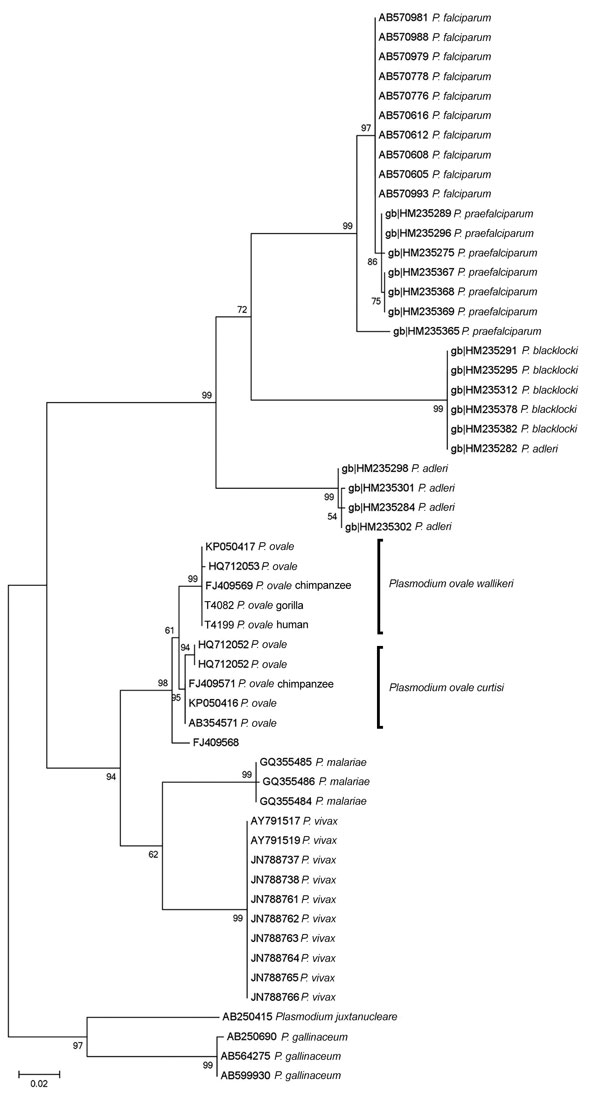Volume 24, Number 8—August 2018
Research Letter
Plasmodium ovale wallikeri in Western Lowland Gorillas and Humans, Central African Republic
Figure

Figure. Maximum-likelihood phylogenetic trees of cytochrome C oxidase subunit 1 (cox1) gene (656-bp) sequences from African great apes and human Plasmodium spp. reference strains. GenBank accession numbers are indicated. Scale bar represents nucleotide substitutions per site.
1These authors contributed equally to this article.
Page created: July 18, 2018
Page updated: July 18, 2018
Page reviewed: July 18, 2018
The conclusions, findings, and opinions expressed by authors contributing to this journal do not necessarily reflect the official position of the U.S. Department of Health and Human Services, the Public Health Service, the Centers for Disease Control and Prevention, or the authors' affiliated institutions. Use of trade names is for identification only and does not imply endorsement by any of the groups named above.